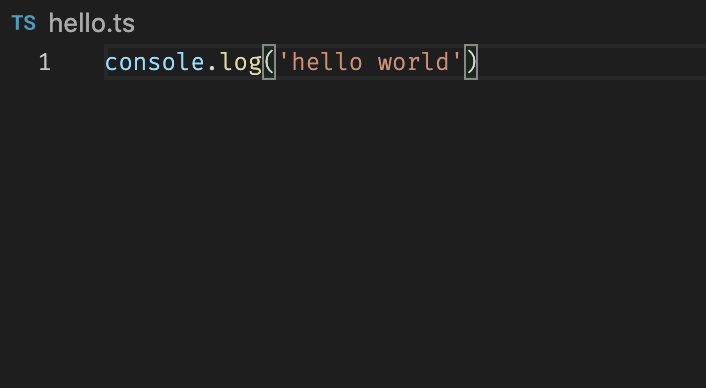Hello World!
- nextjs
- typescript
- tailwind
- hello world
- blogging
Following the ancient traditions of software engineers..
Is this real life, or is this just fantasy...

In the beginning
Once upon a time I started making myself a blog. This was probably 2017, can't remember exactly. In my first attempt I used Jekyll which felt just a little too restricting to customize and unfamiliar with its Ruby to me. Same with Hugo even though in my both attempts I could have made a decent blog in no time. <Sigh> I guess I had to do it the hard way and make my own custom dingy-wingy website with the coolest tools available at the time. Which in 2018 was Gatsby, TypeScript and Styled Components. All so exciting and new at the time.
Yet well, it was not exactly a piece of cake to write a blog from scratch with those tools. While I knew TypeScript and Styled Components fairly well, Gatsby was somewhat fickly beast that at the time was also very new and alas, had many interesting edge-cases. Through shedding blood and maybe a few tears, I managed to assemble a working site but there is something to be said about polishing and fine-tuning things. I could have shipped the first version and been quite happy with it, yet I decided to keep on fine-tuning it and adding little things that didn't matter to anyone except me.
I guess it is a type of analysis paralysis where you get so tunnel-visioned working out some details right when you should instead switch gears and start making content - the thing you were excited to do in the first place! Oh well.
During this epic journey I even went as far as to author my own SEO library just to modularize and archive some of the knowledge I accumulated during this process: react-seo-meta-tags. Now why would one even spend a disproportionately large amount of time making a SEO library for a site with basically no readers or users? Hmm. A good question 🤔. Moving on..
Basically what the library was and still is intended to encapsulate all the basic SEO meta tags into one nice and compact form that makes it easier to follow best SEO practices without having to waste too much time researching them by yourself.
However, SEO wasn't even the most annoying part of this project. While Gatsby pioneered the static React site generation, well-suited for blogs, it had a few pecularities involving its approach. What made me question my sanity a few times was the absolute maze of configuring Gatsby's gatsby-node.js and gatsby-config.js files and debugging GraphQL queries. The idea is great, composable pipelines and plugins, yey! But in practise there was just too many leaks that would have made it enjoyable. Add in the mix GraphQL which is another bulky beast to tame, especially when dealing with static files. Static files. Do you really care about overfetching static files which you A) have to parse in full in the first place and B) are processed into static HTML.
One of the fun bugs I encountered was a linting issue where you had to add an empty .eslintrc to the root of the project to prevent Gatsby from linting a locally linked library's source code. Another nice one, was the ordering of the gatsby-google-analytics plugin. You had to have it in a specific order in relation to the other plugins and I guess I got so frustrated with it, that I switched to another GA plugin. And in addition to these, the parsing of the markdown data with the images seemed to be more of an arcane incantation than software engineering. The darn images would sometimes not reload yet adding a console.log statement, if I recall correctly, somehow made it work (I'm still extremely puzzled by that one).
Well, enough about that. Did I mention that I originally also wrote an AWS stack for this whole app? With S3 bucket, edge lambdas and a CloudFront distribution. And, God forbid, CSP rules applied by an edge lambda. Now if you are not familiar with edge lambdas they do not exactly work always the way you want them to. Namely deploying and updating them, at least the last time I tried, were major hurdles to do automatically. If I recall correctly, you couldn't (or still can't) automatically deploy the new edge lambda version but have to increment it manually, after which you can use the new edge lambda version for your CF distribution. It was... painful. But hey, at least it was cool and interesting. Kinda 👀.
Coming back to the present day
So anyway, the whole thing became quite a drag and I never really finished this thing to the level I wanted it to. Also I went apparently half-insane writing my first content here which didn't seem to fit the tone of a professional website intended to showcase my immeasurable programming talents. Writing interesting content is always nice but I think I should have another venue for pure ranting rather than technical articles.
After letting this site languish for two years, I finally had a good programming groove to tackle it once more with a new, more pragmatic angle. Also I wanted to trial two new fascinating technologies, Next.js and TailwindCSS that seemed quite promising.
Why? Well, from my experience with Next.js it does seem and feel less magical way of deploying static sites with React where you, the programmer, can work with a lot more suitable set of primitives and abstractions compared to the magical soup of Gatsby. I don't mean to start gang-banging on Gatsby here, it's a fine tool but I've definitely felt a lot less pain with Next.js.
For example, to render the markdown into HTML you basically write the reading logic by yourself using any tool you like, for example remark, and use plugins that you may desire. Gatsby does this (almost) behind the scenes yet because it was configured with one, very error prone file of gatsby-node.js, in a generation step that wasn't exactly quick the feedback loop wasn't that great. Also Vercel, the company behind Next.js, has a nice variety of boilerplate projects in Github that showcase very useful libraries integrated with Next.js.
One other that Next.js seemed to have done better, at least the last time I checked, was the deployment. Of course, Gatsby has been catching up Next.js on this but I think Next.js is still far ahead. And compared to the AWS deployment deploying to Vercel seemed almost criminally easy (almost as if no pain indicates nothing of value was done). One thing where I feel Gatsby is still better, having rewrote this site from Gatsby to Next.js, is the image optimizations and the high-quality plugins for some markdown stuff at least (such as autolinking headers). But I think Next.js is closing that gap but definitely it's nice to have such vibrant innovation on this area!
Tailwind
The another new library that I wanted to learn was and still is Tailwind, an atomic set of CSS utility classes provided in a nice, structured form. I had my doubts about it, and still do, but Tailwind has proven to me that with a smaller, opinionated API for CSS developers can produce elegant UI designs much quicker. Tailwind isn't necessarily a tool to style your JSX components but a design system to organize your styles in a much more compact form. Without enforcing the encapsulation of the styles around JSX components like styled-components do, Tailwind is much closer to writing inline CSS that, as you might imagine, can appear quite messy to an outsider.
Yet it's the efficiency of writing those styles that in the end separates Tailwind from other CSS libraries or tools. Working with CSS directly, many developers get the insatiable feeling of wanting to tune a few details here and there to their heart's desire. Which is fine to learn CSS but isn't necessarily the most productive way to produce nice UIs. Tailwind has some limitations to it, certainly, such as having no built-in way of adding :before or :after elements. Yet it navigates through its downsides very remarkably and makes a difficult problem (styling web pages) seem almost trivial. And you can organize your classes with lint rules and so forth.
Well, enough of praising. It's not the tools that make a good programmer but how you use them. Anyone can make terrible code with even the most sophisticated tools but it's the self-discipline of avoiding doing too much and too little, that is the balance that only experience can make a good programmer.
To compare the Gatsby site to this version, the Gatsby version took maybe month's worth of work to create it. This site took perhaps a week's worth of work. Of course, I was able to use basically the same layout and avoid a lot of the designing of the UI. But still I would it was much nicer and quicker to work with Next.js and StyledComponents/SCSS. Sometimes it's not a bad idea to invest in researching and learning some promising tools to speed up your development routines that you are already very comfortable with. Shaking things up definitely keeps things interesting.
Hohhoijaa. So what next? Maybe another blog post. Maybe I'll finally get to actually writing new stuff instead of rewriting the same projects all over again.
While this setup currently is (probably) the most hipstery way of launching personal blogs that isn't completely esoteric, I probably won't rewrite this in a veery long time. Time is limited. Our lives last merely a fraction in the timespan of the universe. Do I really want to spend my limited existence redoing something I've already done before? I would rather just hang out in my underwear and drink beer. That at least wouldn't require one more style fix to satisfy my OCD.

Hi, I'm Teemu Koivisto. A software developer from Helsinki. When I'm not doing the boring stuff, I like practising music, lifting weights and getting high on heroin. One of those was a lie.